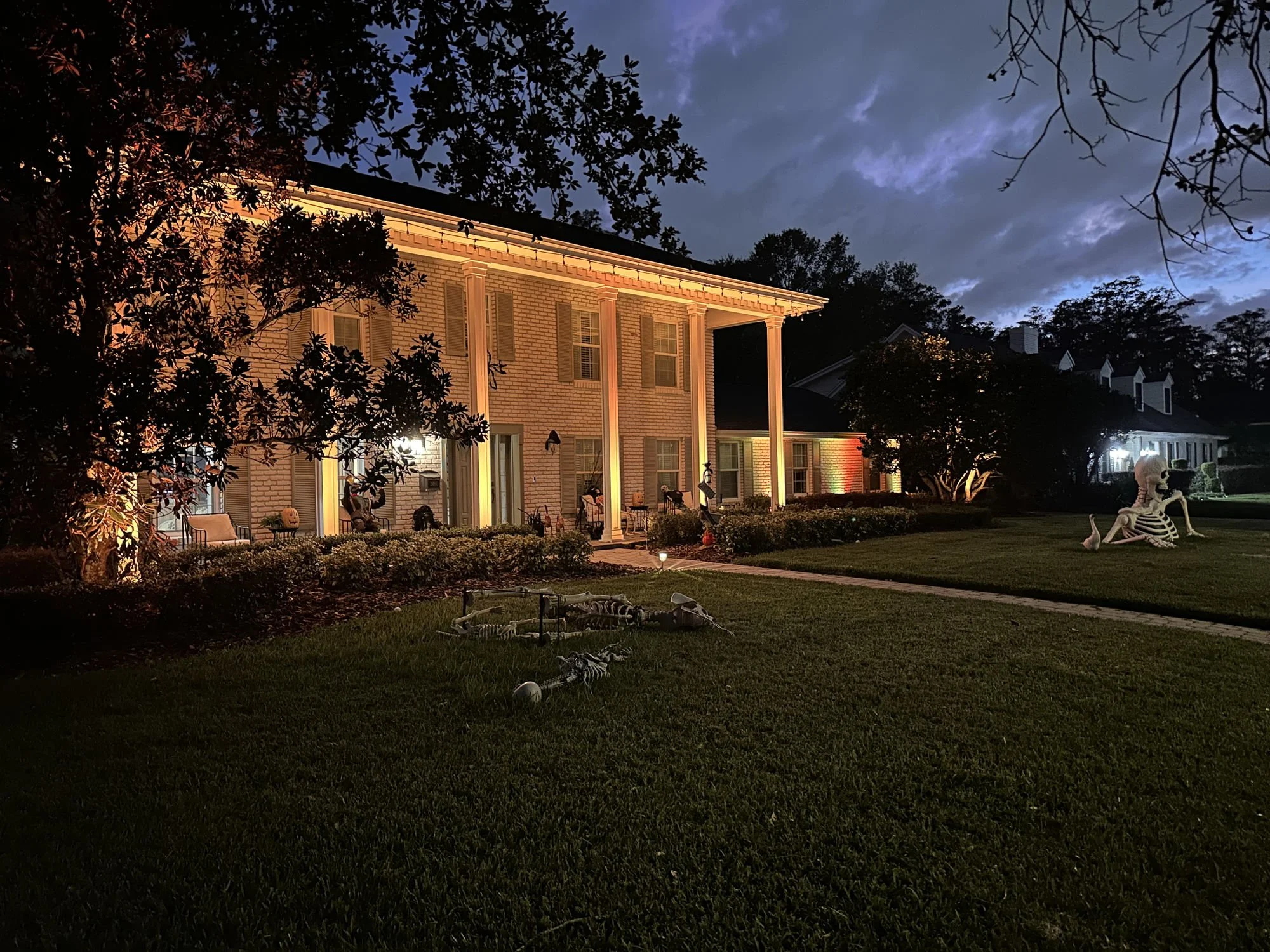Uplighting vs Downlighting: What’s the Difference and When to Use Each?
What’s the Core Difference?
In landscape lighting, uplighting and downlighting refer to the direction the light is cast.
Uplighting projects light upward from the ground to highlight trees, walls, architecture, or focal points.
Downlighting casts light downward from above, creating a softer, more natural effect — similar to moonlight.
Both have their place in a professional lighting design. Used correctly, they shape how your property looks, feels, and functions after dark.
When to Use Uplighting
Uplighting is bold, dramatic, and eye-catching. It’s designed to draw the eye upward and highlight vertical features of your landscape or home.
Best Uses for Uplighting
Trees – Especially tall palms, oaks, or crepe myrtles
Architectural elements – Columns, stonework, facade textures
Sculptures or fountains – Any vertical focal point
Flagpoles or entry pillars
Benefits of Uplighting
Creates striking shadows and depth
Highlights height and form
Adds elegance and drama to nighttime curb appeal
Makes architectural features pop
Learn About the Types of Fixtures We Use
Read About our Premium Integrated Package
When to Use Downlighting
Downlighting is softer and more subtle. It mimics the effect of moonlight or patio lighting by casting illumination downward from above — typically mounted in trees, soffits, or pergolas.
Best Uses for Downlighting
Patios and gathering areas – Creates soft, even coverage
Pathways and driveways – Safe, non-intrusive guidance
Lawns and garden beds – Adds texture and shadow
Outdoor dining or firepit zones – Comfortable, overhead light
Benefits of Downlighting
Reduces glare
Creates a natural look
Enhances safety without visible fixtures
Great for ambiance and entertaining
Can You Use Both?
Absolutely — the best outdoor lighting designs often use both uplighting and downlighting to create contrast and visual interest.
For example:
A palm tree might have uplights at the base to highlight the trunk, and a downlight in the canopy to softly wash the area below.
A wall might be uplighted for texture while the surrounding patio is gently downlit for usability.
Combining the two creates layered lighting that adds dimension, function, and curb appeal — without over-lighting or creating glare.
Why Professional Design Matters
The difference between a great lighting system and a “just okay” one often comes down to fixture placement and direction. We consider beam spread, mounting angles, glare control, and how light behaves on different surfaces — so your system looks just as good at night as it does in photos.
We use real demo lights during your consultation so you can see uplighting vs downlighting in action, on your property, before making a decision.
Learn More About Us
Learn About our Lighting Packages
Let’s Design a System That Brings Your Property to Life
Whether you’re going for soft and subtle or bold and dramatic, we’ll help you strike the right balance with a professionally installed, low-voltage lighting system built to last. Fill out the contact form below, and one of our team members will reach out to schedule the next steps.

